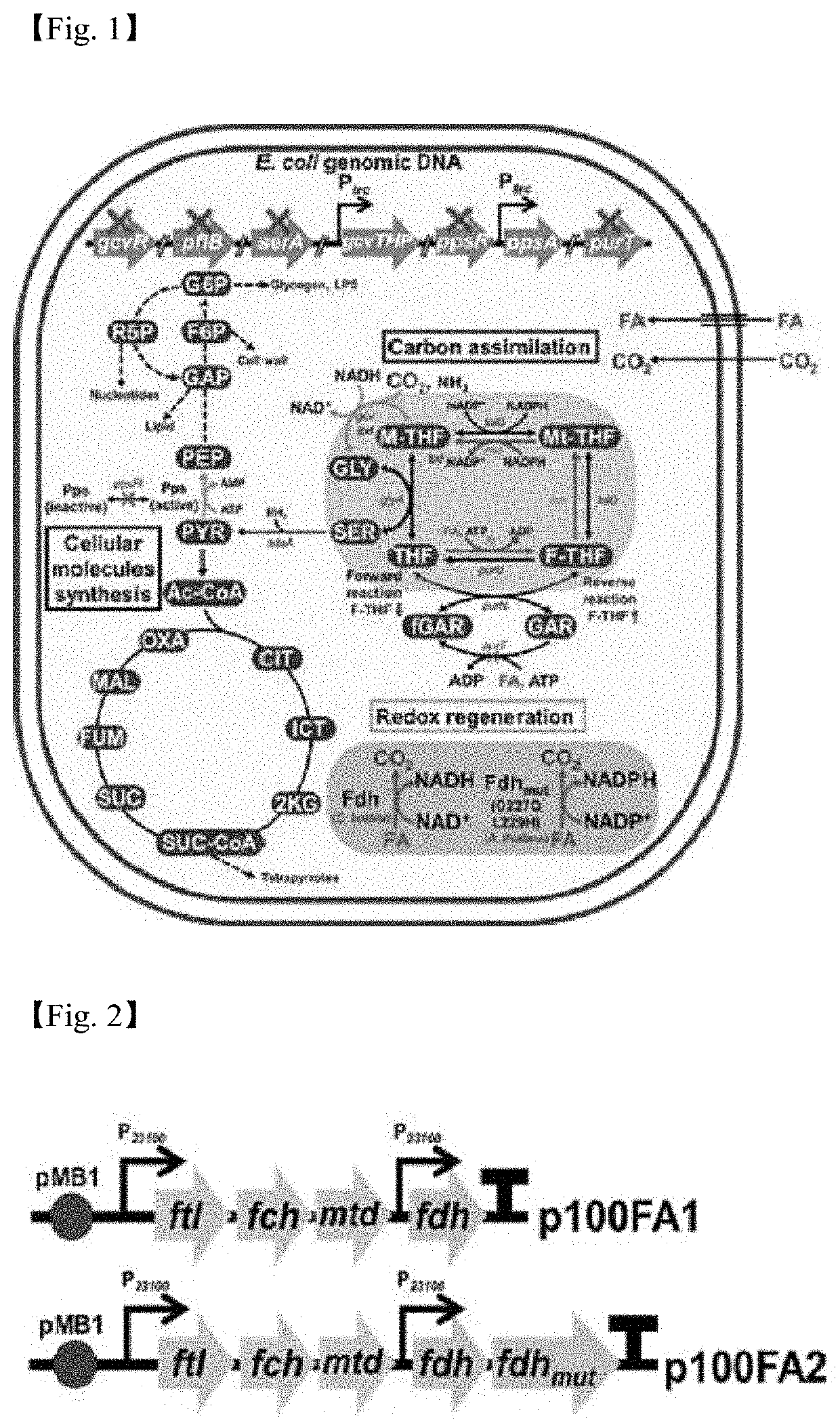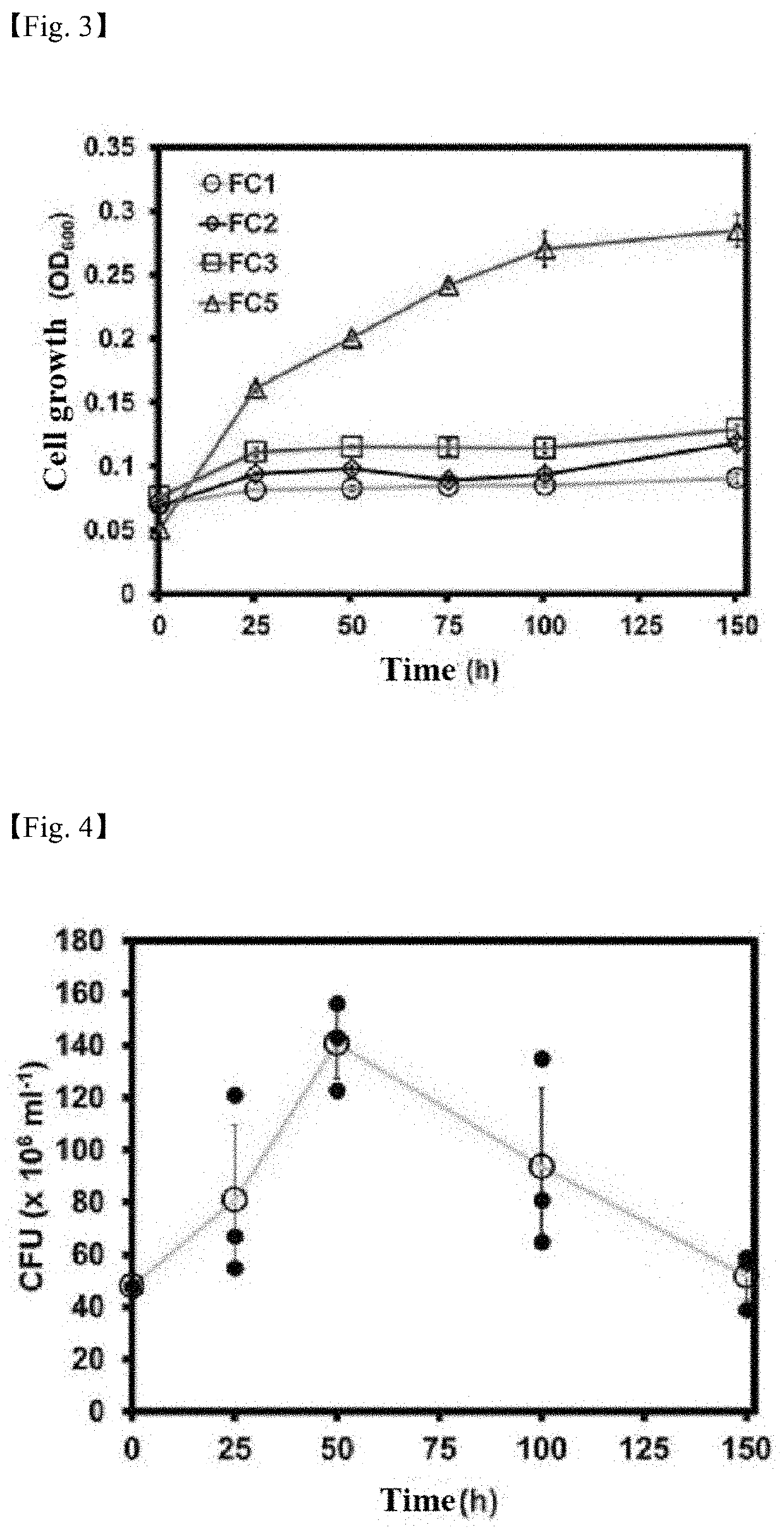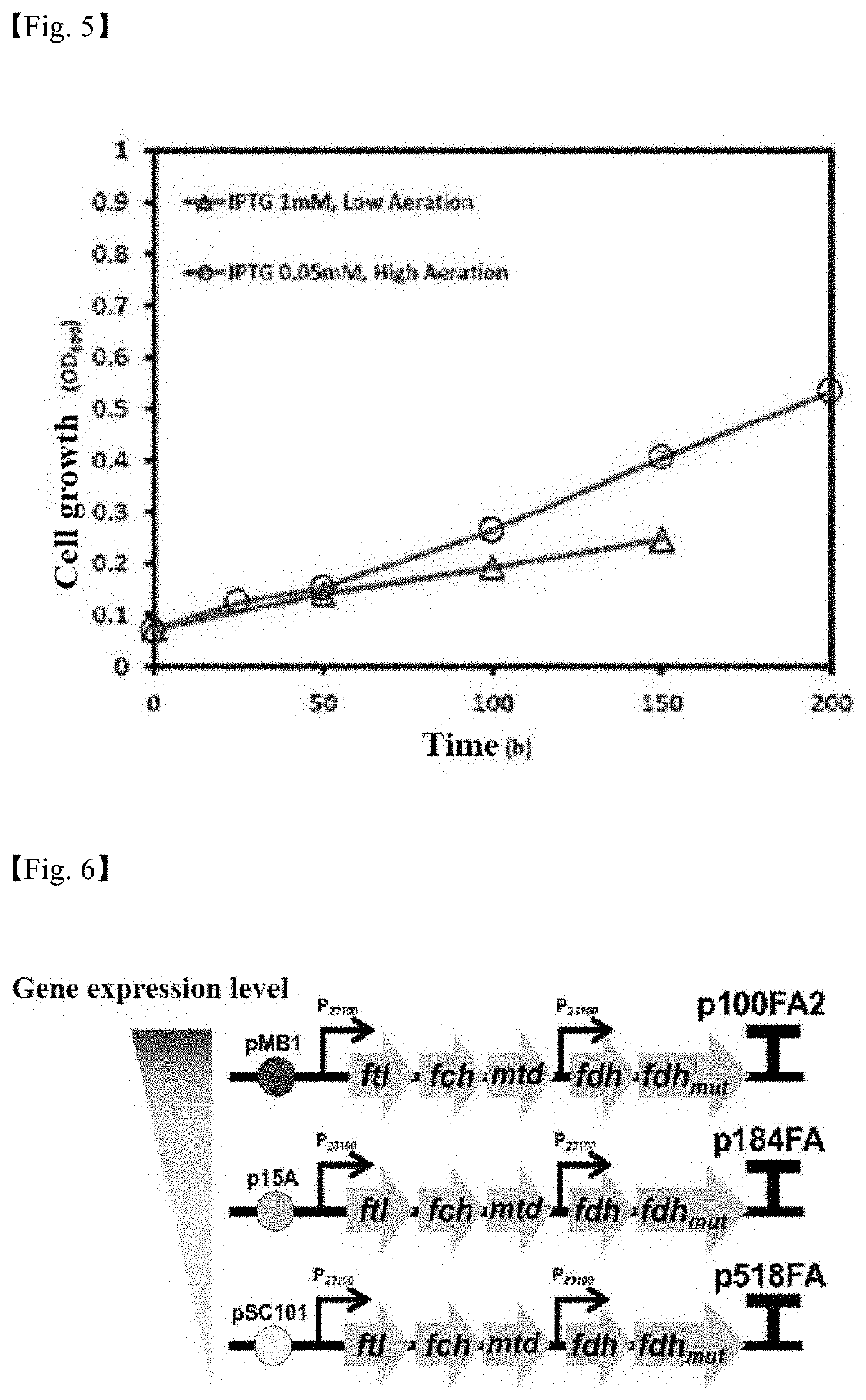Recombinant microorganism capable of growing using only carbon dioxide and formic acid and method for producing useful substances using the recombinant microorganism
- Summary
- Abstract
- Description
- Claims
- Application Information
AI Technical Summary
Benefits of technology
Problems solved by technology
Method used
Image
Examples
example 1
nt in Metabolic Flow for Formation of Pyruvic Acid from Carbon Dioxide and Formic Acid Through Establishment of Carbon Dioxide and Formic Acid Assimilation Pathway and Metabolic Engineering Strategy
[0072]In order to improve the carbon assimilation metabolic flow in the carbon dioxide and formic acid assimilation metabolic pathway, a plasmid containing the genes ftl, fch, and mtd involved in the carbon dioxide and formic acid assimilation pathway was introduced into a recombinant E. coli strain in which the gcvR, pflB and serA genes of E. coli were deleted and the gcvT promoter was replaced with the strong trc promoter to develop a recombinant strain that synthesizes 12.9% of the total pyruvic acid from carbon dioxide and formic acid.
[0073]Specifically, the foreign gene fragments required for plasmid production were prepared by conducting PCR using the genomic DNA of microorganisms having the corresponding gene as a template and using a primer designed for amplification of the gene a...
example 2
nt of Recombinant Microorganisms Capable of Growing Using Only Carbon Dioxide and Formic Acid Through Improvement of Metabolically Engineered Strain
[0082]The ppsR and purT genes were deleted from the genome of the recombinant E. coli strain produced in Example 1, the promoter of the ppsA gene was replaced with a strong trc promoter to produce a recombinant E. coli strain (DH5α AKO1), and a plasmid (p100FA2), produced by adding the fdh gene and the fdhmut gene to the plasmid produced in Example 1, was introduced into the recombinant E. coli strain (DH5α AKO1) to produce E. coli (DH5α FC5) capable of growing using only carbon dioxide and formic acid.
TABLE 8DerivedTarget geneNCBI informationmicroorganismppsRPhosphoenolpyruvate synthaseEscherichia coliregulatory proteinNCBI GeneID: 946207[SEQ ID NO: 16]purTPhosphoribosylglycinamideEscherichia coliformyltransferaseNCBI GeneID: 946368[SEQ ID NO: 17]
TABLE 9PlasmidCharacteristicsp100FA2Includes pBR322 replication origin, ampicillin resistan...
example 3
nt of Growth Rate Through Optimization of Culture Environments and Gene Expression Level
[0086]The culture conditions of the DH5α FC5 strain produced in Example 2 were optimized, and a plasmid having a attenuated number of copies compared to the above-described plasmid was produced to construct a DH5α FC8 strain that grows rapidly when adding only carbon dioxide and formic acid. In addition, it was observed that the DH5α FC8 strain grew at optical densities from 0.018 up to 3.59 using only carbon dioxide and formic acid when the conventional culture temperature of 37° C. was decreased to 32° C. to increase the cyo expression level and decrease the cyd expression level.
PUM
| Property | Measurement | Unit |
|---|---|---|
| Temperature | aaaaa | aaaaa |
| Concentration | aaaaa | aaaaa |
| Molar density | aaaaa | aaaaa |
Abstract
Description
Claims
Application Information
 Login to View More
Login to View More - R&D
- Intellectual Property
- Life Sciences
- Materials
- Tech Scout
- Unparalleled Data Quality
- Higher Quality Content
- 60% Fewer Hallucinations
Browse by: Latest US Patents, China's latest patents, Technical Efficacy Thesaurus, Application Domain, Technology Topic, Popular Technical Reports.
© 2025 PatSnap. All rights reserved.Legal|Privacy policy|Modern Slavery Act Transparency Statement|Sitemap|About US| Contact US: help@patsnap.com



